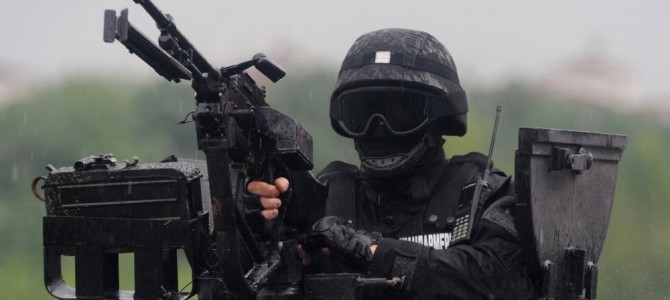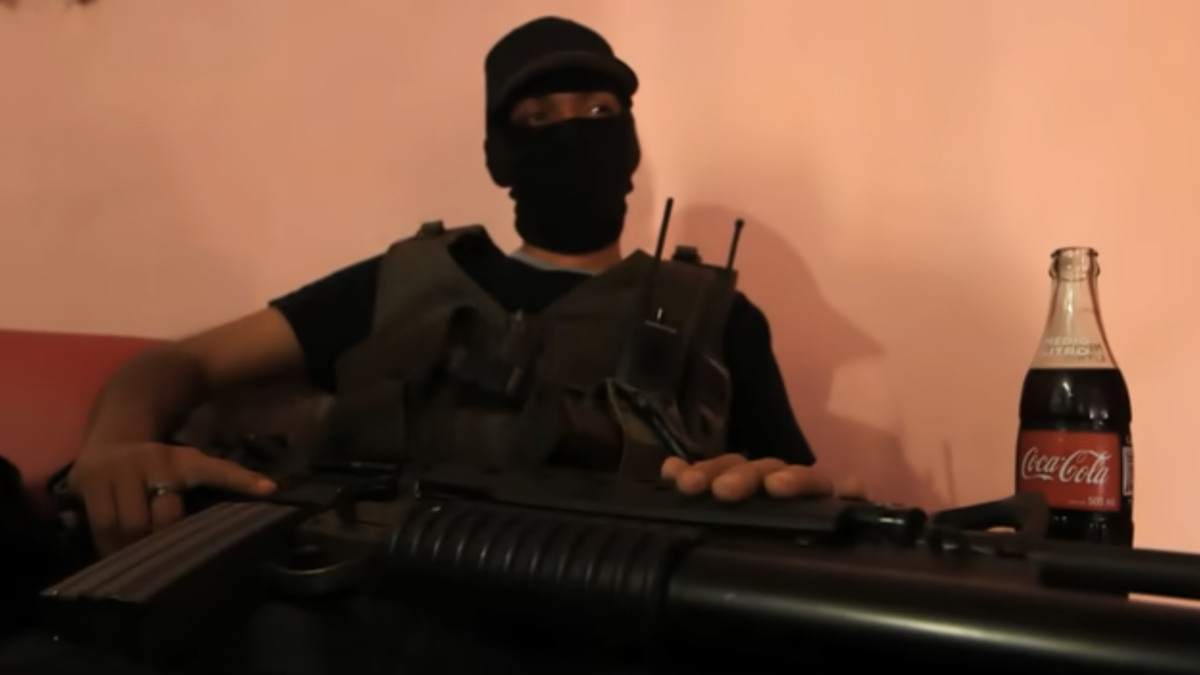
Custer is a nice little town in the Black Hills of South Dakota. Not quite the tourist center of the area—that’s really more up toward Keystone and Mount Rushmore—it still get its share of summer visitors’ traffic. Enough, anyway, to support just over 2,000 people, out of a county population somewhere around 8,500. Rick Wheeler, the sheriff of Custer County, presides over a department that has received at least $141,005.63 in military equipment from the federal government since 1991—including two suits of armor, a “gunner protection kit,” and eight 7.62 mm rifles.
Or so, at least, the Marshall Project reports, assembling recently released data from the Pentagon’s “1033 Program,” which distributes surplus military equipment to local law enforcement. Reached by phone, a spokesman for the sheriff’s office insisted the figure was false—but he agreed that Custer had received each item on the Pentagon’s list, so the disagreement seems to be only over the valuation.
It’s not that much equipment, of course, and it’s not worth that much money. Not, anyway, when the 1033 Program as a whole has distributed over $5 billion in equipment since 1990. Not when—to take a few examples chronicled by the Marshall Report—the 67 police officers of Johnston, Rhode Island, (population 29,000) got ten tactical trucks and 35 assault rifles. Or the security guards of the University of Arkansas for Medical Sciences signed up for eight rifles and four shotguns, and the campus police at Florida International received 50 M-16 rifles and a mine-resistant vehicle (MRAP). The South Dakota state penitentiary has done better than any of the state’s counties, but even that haul is merely $489,964 worth of military equipment, a trifle compared to the worst offenders around the country.
Why Do Civilian Agencies Need Military Gear?
Yet consider this: Yes, for example, the office of South Dakota’s attorney general got only the bagatelle of five rifles worth $2,495, but why aren’t we asking the prior question: What exactly is a Midwestern state’s attorney general doing with any military rifles?
What, for that matter, is anyone doing with military equipment? Only once news images showed the equipment trotted out by law enforcement in Ferguson, Missouri, did the larger public begin to notice the phenomenon against which conservative and libertarian writers had been inveighing for some time, particularly Radley Balko, in his 2013 book Rise of the Warrior Cop: The Militarization of America’s Police Forces. Now, of course, President Obama has promised an inquiry into the program.
But those relatively minor Pentagon details involving South Dakota (which received only a few military assault vehicles and suits of armor, which I looked up solely because it’s my own small-population state) point to a deep constitutional offense hidden in the 1033 surplus equipment—and point toward that offense even more clearly than the arming of police in big cities. Are things so bad along the banks of the Missouri River that the town of Yankton (population 14,500) really needs a robot, a grenade launcher, 14 reflex sights, and a pair of riot guns from the U.S. military? The sheriff of the surrounding county, Jim Vlahakis, apparently thought his office could get by with only a pair of rifles from the military program. So why did Brian Paulsen, Yankton’s chief of police, think his police force needed all this? (The run-around and refusal to return phone calls that most of the South Dakota law-enforcement agencies gave me is revealing; only the desk officer in Custer spoke to me originally, and mostly, I think, because my question took him by surprise.)
When Law Enforcement Becomes War
The police departments of the two largest cities in the state, Sioux Falls and Rapid City, and the sheriffs in their surrounding counties, Minnehaha and Pennington, are listed in the Pentagon’s documents as receiving only a few rifles. But the town of Mitchell (population 15,500) is listed with $733,000 worth of equipment. The sheriff of Codington County (population 27,500) with $415,400. And when we reach the South Dakota Highway Patrol, headed by Colonel Craig Price, things get wildly out of hand: $2.7 million worth of full-tracked carriers, armored trucks, grenade launchers, and other equipment. Robots, riot guns, night sights, a military helicopter: the Highway Patrol has you covered if war breaks out in the Bad Lands and the Black Hills.
Short of war, however, the offense of all this equipment is something we might expect small-town and small-state law-enforcement officers to understand. Big cities, with their special-uniformed SWAT teams and army-style ranks, are deeply infected with the militarization of America’s police. But in a place like Custer, South Dakota—or Yankton, and Codington County, and the Highway Patrol’s office in Pierre—the older understandings of posse comitatus and the separation of the army from civil life ought still to be in the air.
Police officers have the right and the duty to protect themselves, but a disturbing message is sent by every piece of military equipment in the hands of civilian authorities. Each tank and military helicopter says we cannot police ourselves. Each grenade launcher proclaims that, even in a small town, law-enforcement is just a species of war.








